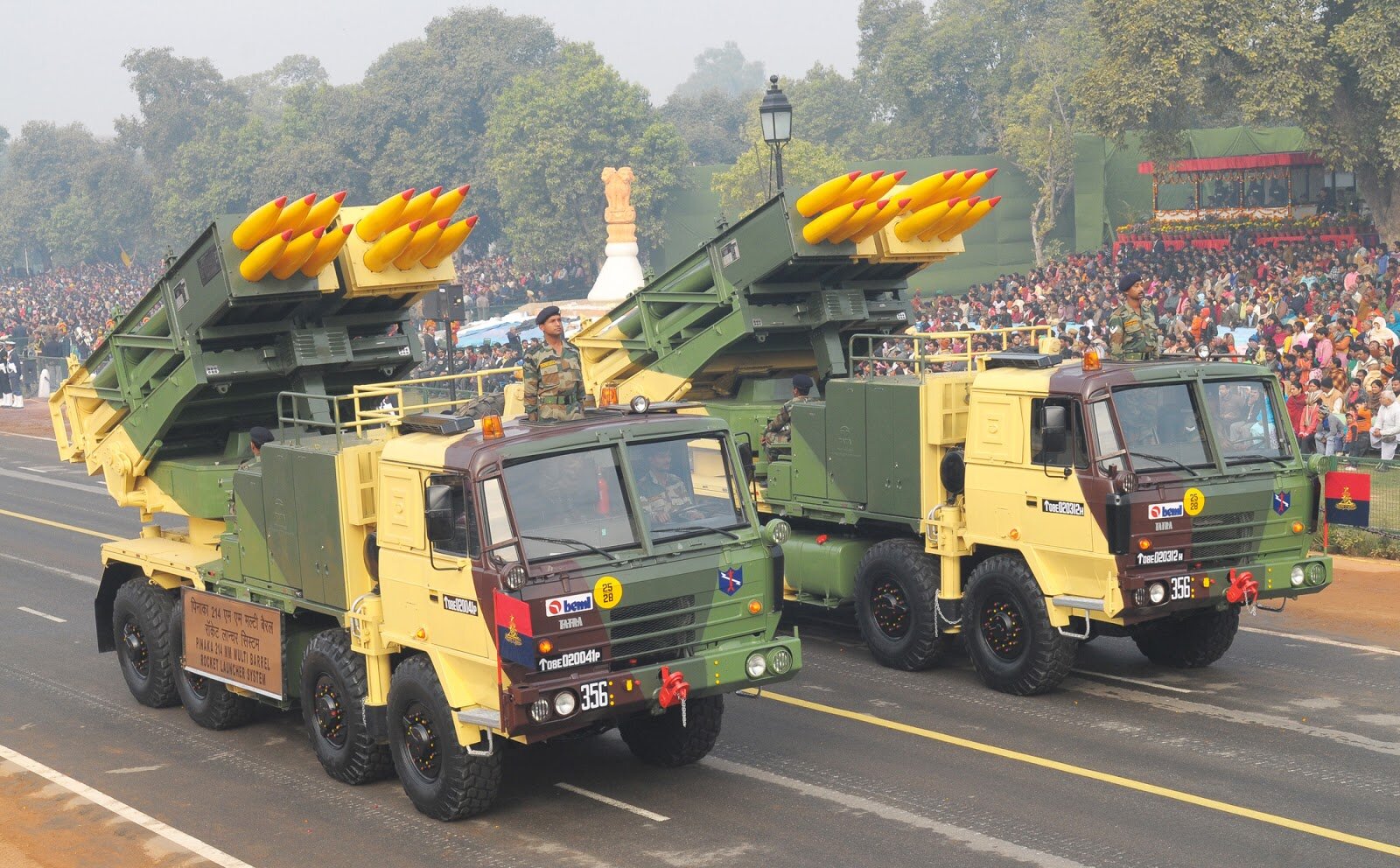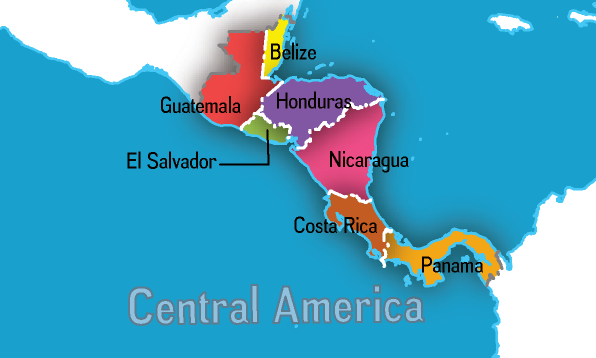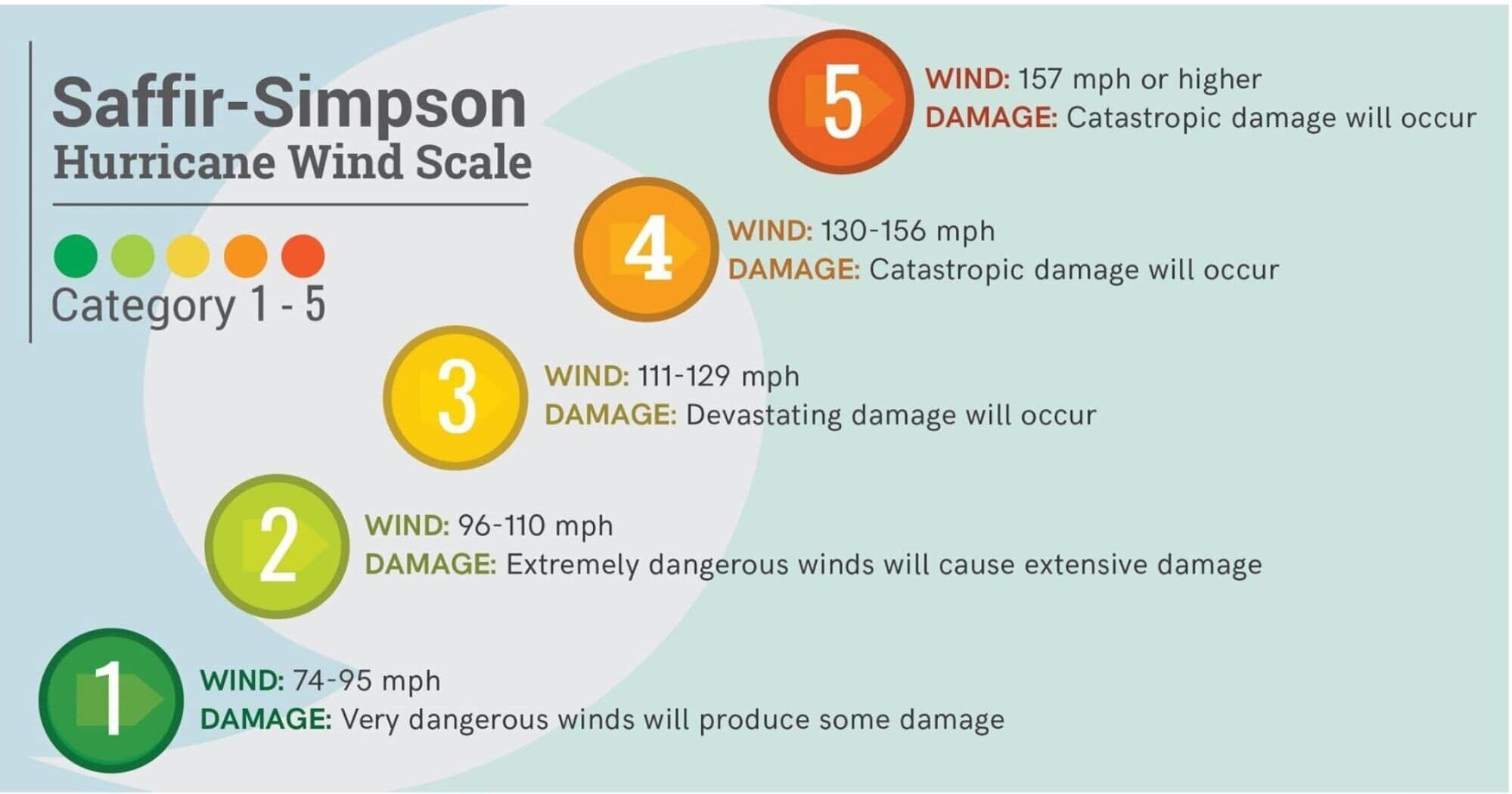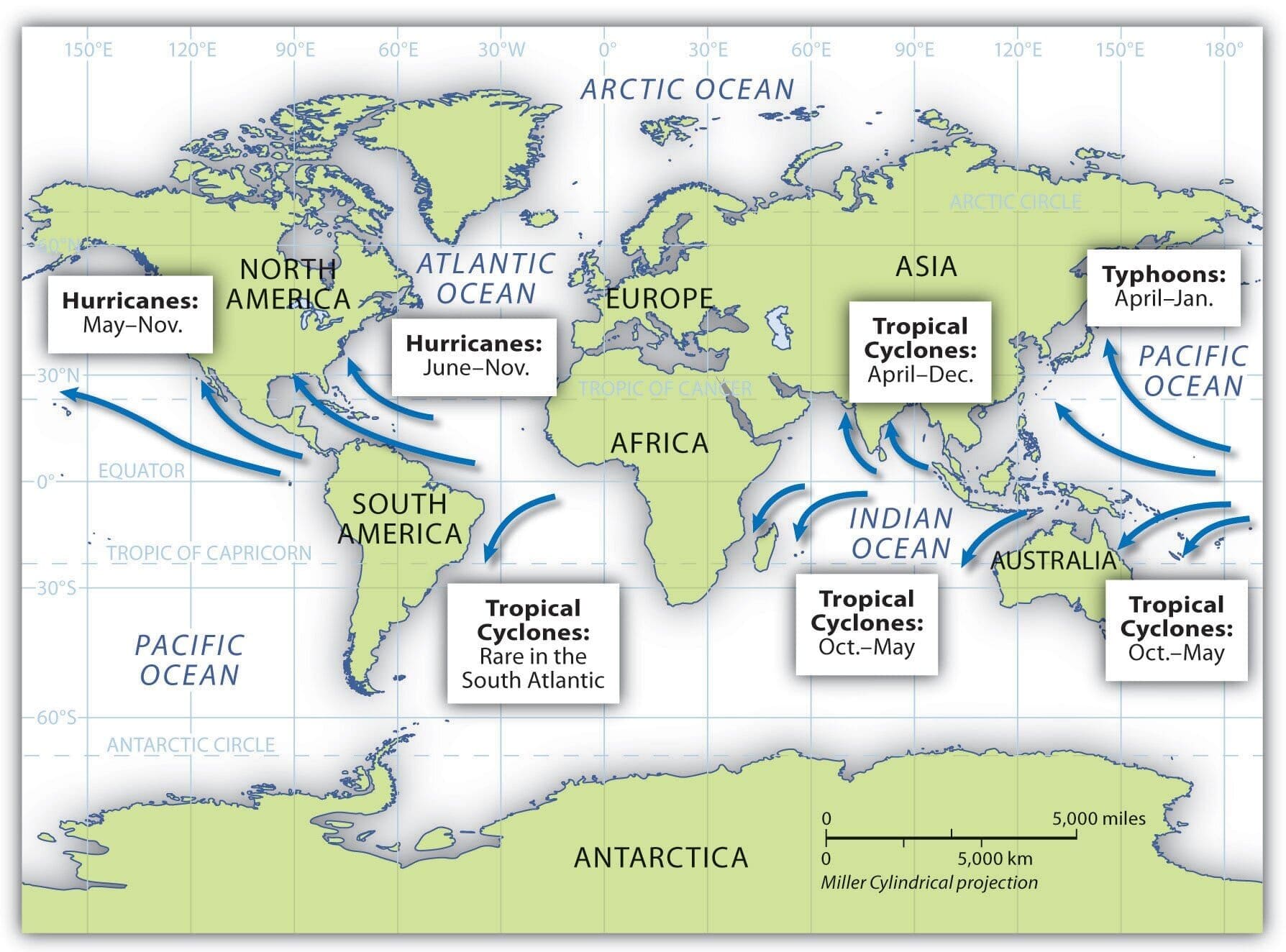Indian Polity
Special Courts for Trial against Legislators
Why in News
Recently, a three-judge Bench of the Supreme Court has said that the setting up special courts to expeditiously try sitting and former MPs and MLAs accused of various crimes is in public interest and will enhance faith in judiciary.
- The Bench was considering a report filed by a committee of the Madras High Court that raised reservations over the setting up of special courts to exclusively try legislators for various offences.
Key Points
- Background:
- In 2017, the Supreme Court had ordered that special courts be set up across the country to fast-track the long-pending trials of lawmakers.
- Following this, 12 special courts were set up across 11 States exclusively to try sitting MPs and MLAs.
- The special court in each State has jurisdiction over the entire State while the two in Delhi cover cases within the precincts of Delhi or “partly Delhi”.
- In September 2020, SC-appointed amicus curiae (friend of the court), in his two reports, highlighted that despite the best efforts by the court to constitute special courts for trying cases against legislators, close to 4,442 criminal cases involving 2,556 sitting members of Parliament (MP) and members of legislative assemblies (MLAs) are pending. Reasons for delayed trial:
- Stays granted by various high courts,
- Insufficient special courts to exclusively try cases against MPs/MLAs,
- Shortage of prosecutors and latches in prosecution,
- Delayed investigation.
- Considering the reports, the SC passed an order that criminal trials involving elected representatives will be monitored by a special bench of each high court and in cases where a trial has been stayed, the special bench will hear and decide on continuing or cancelling the stay, preferably within two months.
- Expediting cases against legislators is required not only because of the rising wave of criminalization that is occurring in the politics in the country, but also due to the power that elected representatives wield to influence or hamper effective prosecution.
- Reservation of the Committee of the Madras High Court: It has questioned the constitutional validity of setting up Special Courts to exclusively try MPs and MLAs for various crimes.
- Special Courts can only be constituted by a statute and not by executive or judiciary.
- The Special Courts should be “offence-centric” and not “offender-centric.”
- For example, an MP/MLA, who commits an offence under the POCSO Act can only be tried by a Special Court created under the POCSO Act and there cannot be another Special Court exclusively for trial of an MP/MLA, who commits POCSO offence.
- Further, it questioned how one Special Court could cover the cases across all districts of a State. Witnesses may face travelling and other issues.
- It also referred to how cases are filed and withdrawn in a State when a government gets changed in that State.
Criminalization of Politics
- Reasons: Criminalization of politics in India includes political control of the police, state money, corruption, weak laws, lack of ethics, values, vote bank politics and loopholes in the function of the election commission.
- Data Analysis: According to the Association of Democratic Reforms (ADR), nearly half of the newly-elected Lok Sabha members (2019) have criminal charges against them, a 26% increase as compared to 2014.
- Legal Provisions:
- Section 8 of the Representation of the People Act, 1951, bans convicted politicians (for certain offences) from contesting. However, those facing trial, no matter how serious the charges, are free to contest.
- According to Article 102 (1) of the Constitution, Parliament is obliged to make a law on the matter.
- Related Orders by the Supreme Court:
- In February 2020, the Supreme Court ordered political parties to publish the entire criminal history of their candidates for Assembly and Lok Sabha elections along with the reasons that goaded them to field suspected criminals over decent people.
- View of the Election Commission:
- The EC had supported the plea seeking life ban on politicians convicted in criminal cases.
- The EC proposal to bar candidates accused of an offence punishable with at least five years of imprisonment from contesting elections, after charges are framed against them by a court, has been opposed by many parties.
- The opposition is based on two grounds: ruling politicians will misuse this against the Opposition; and the law of the land assumes everyone to be innocent till proven guilty or convicted.
Way Forward
- As politics dominates the bureaucracy, and reins in business, civil society and the media, the country needs governance that is free of the “criminal” virus.
- Ensuring prosecution with public pressure may help. If one political leader is hauled up for giving tickets to large numbers of tainted candidates, something positive may happen.
- Further, there is a need to strengthen the Election Commission, EC can register a political party but cannot deregister it. Regulating the affairs of a political party is essential for a cleaner electoral process.
International Relations
India-UAE Meet on Investments
Why in News
Recently, the eighth meeting of the India-UAE High-Level Joint Task Force on Investments has been virtually hosted by India in the wake of the ongoing pandemic.
Key Points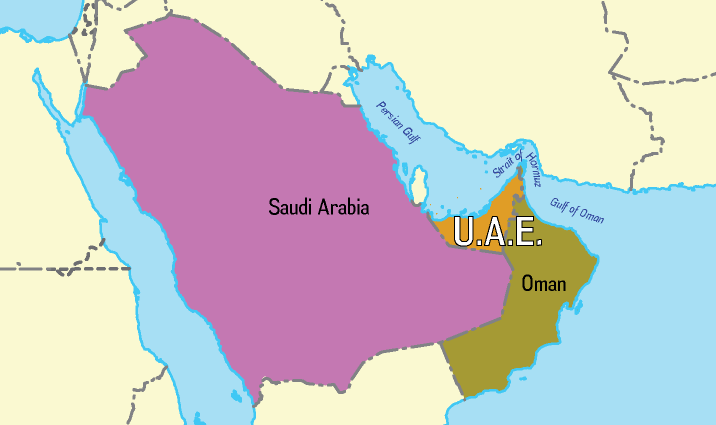
- The Joint Task Force was created in 2012 as a crucial forum for further deepening the economic ties between the UAE and India.
- The mechanism has assumed greater importance as the two countries signed the Comprehensive Strategic Partnership (CSP) Agreement in January 2017 and the Joint Task Force is an integral component of it.
- The focus areas underlined in the CSP were economy with emphasis on a two-way flow of investments, counter-terror cooperation and defence ties.
- India has signed CSPs with the UK, Indonesia, Vietnam and Australia.
- The mechanism has assumed greater importance as the two countries signed the Comprehensive Strategic Partnership (CSP) Agreement in January 2017 and the Joint Task Force is an integral component of it.
- At the meeting, both sides reviewed the existing UAE Plus and the Fast Track Mechanism created in 2018.
- UAE Plus is a special and dedicated desk constituted under Invest India with Arabic speaking officials to help facilitate investments.
- The Fast Track Mechanism aims to resolve any challenges experienced by UAE investors in India.
- Scope of Improvement:
- Explore ways to facilitate investments in key Indian and UAE sectors with potential for economic growth, and to maintain their dialogue and further build on the considerable achievements of the Joint Task Force.
- Encourage investment and cooperation in areas of mutual interest with the purpose to stimulate economic activities in the post-Covid-19 times.
- Address specific barriers to trade, like anti-dumping duties, tariffs and regulatory restrictions between the two countries with an aim to further strengthen the trade and economic ties and to coordinate efforts and promote mutual cooperation.
- Continue the work between respective civil aviation authorities to ensure speedy normalisation of air transport operations for their mutual benefit.
- Development and operation of UAE-based funds to invest in India, in the light of the Foreign Portfolio Investor Regulations 2019 by the Securities and Exchange Board of India (SEBI).
- India agreed to look into these issues with the objective of facilitating further direct investments of UAE-based funds and seeking mutually beneficial solutions in that regard.
- Focus on opportunities for cooperation and potential investments in key sectors in India including the healthcare and pharmaceutical industry, mobility and logistics, food and agriculture, energy and utilities and others.
India-UAE Relations
- India and the United Arab Emirates (UAE) enjoy strong bonds of friendship based on age-old cultural, religious and economic ties between the two nations.
- The relationship flourished after the accession of H.H. Sheikh Zayed Bin Sultan Al Nahyan as the Ruler of Abu Dhabi in 1966 and subsequently with the creation of the UAE Federation in 1971.
- Political Relations:
- In August 2019, UAE awarded ZAYED Medal, their highest civilian award, to the Prime Minister of India for consolidating the long-standing friendship and joint strategic cooperation between the two nations.
- Indian Prime Minister’s visit to the UAE in August 2015 marked the beginning of a new and comprehensive and strategic partnership.
- The Crown Prince of Abu Dhabi visited India in February 2016 and had wide-ranging discussions on bilateral, regional and multilateral issues of mutual interest.
- Commercial Relations:
- India-UAE trade was around USD 59 billion making UAE, India’s third-largest trading partner for the year 2019-20 after China and the USA.
- The UAE is the second-largest export destination of India with an amount of over USD 29 billion for the year 2019-20.
- For the UAE, India is the second-largest trading partner for the year 2019 with an amount of around USD 41.43 billion for non-oil trade.
- India’s Major Exports: Food items, Machinery, Gems and Jewellery, Textiles, Engineering and Machinery Products, Chemicals, etc.
- India’s Major Import: Crude Oil, Petroleum and Petroleum Products, Precious Metals, Minerals, Chemicals, Wood and Wood Products.
- Cultural Relations:
- The two nations share historical ties and have maintained regular cultural exchanges both at official and popular levels.
- They signed a Cultural Agreement in 1975 and the embassies continue to organise various cultural activities on their own as well as by collaborating with other cultural organisations.
- Indian Community:
- The UAE is home to the Indian expatriate community of more than 2.6 million, the largest expatriate community in the UAE, which has played a major role in the economic development of the UAE.
- Recently, India has asked the members of the Gulf Cooperation Council (GCC) which also includes UAE, to facilitate the return of Indians who want to resume work with the relaxing of Covid-19-related restrictions.
Recent Developmental Events in the UAE
- In March 2019, the 46th session of the Council of Foreign Ministers of the Organisation of Islamic Cooperation (OIC), was held in Abu Dhabi where India was invited as a guest of honour.
- The UAE hosted the event and had strongly defended the decision to invite India despite Pakistan’s strong objection and threat to boycott the event.
- In February 2020, the UAE issued an operating licence for the Arab world's first nuclear power plant, paving the way for it to start production in 2020.
- UAE Mars Mission: In July 2020, the UAE launched a Mars probe named Amal (Hope) from Japan, marking the Arab world’s first interplanetary mission.
- In September 2020, the UAE signed the Abraham Accord with Israel and Bahrain, which is the first Arab-Israeli peace deal in 26 years.
Science & Technology
Future Pandemics and Reduction Measures
Why in News
Recently, the Intergovernmental Science-Policy Platform on Biodiversity and Ecosystem (IPBES) has released a report which warns about future pandemics, their more frequent emergence, a faster pace of spread and more damage to the world killing more people than Covid-19, unless significant measures are taken.
- The IPBES is an independent intergovernmental body, established by the United Nations (UN) in 2012.
- It aims to strengthen the science-policy interface for biodiversity and ecosystem services for the conservation and sustainable use of biodiversity, long-term human well-being and sustainable development.
Key Points
- Pandemics of the Century:
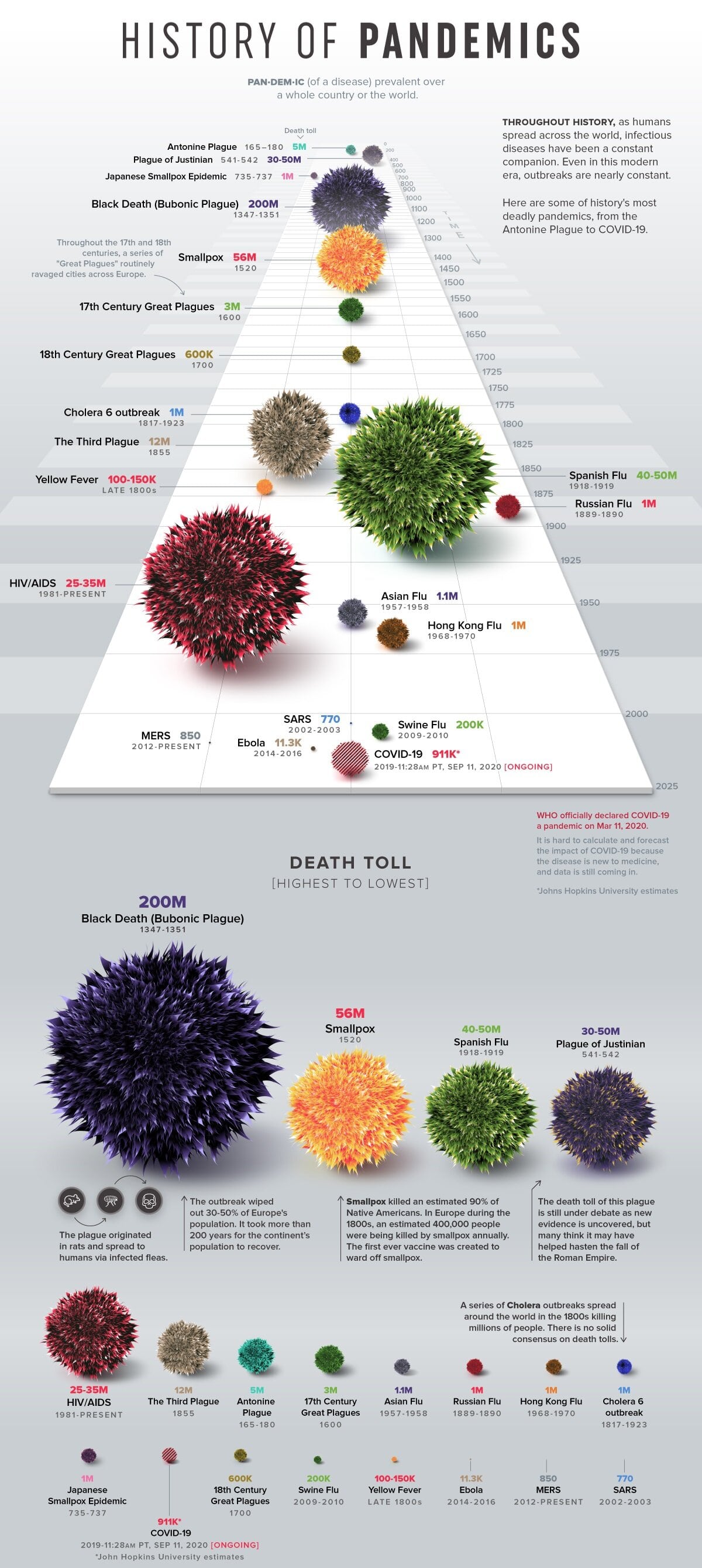
- Covid-19 is at least the sixth pandemic to have taken place in the last century since the Spanish Influenza Pandemic of 1918.
- In March 2020, the World Health Organisation (WHO) declared Covid-19 a pandemic.
- Three of the pandemics were caused by influenza viruses, one by Human Immunodeficiency Virus (HIV) followed by Severe Acute Respiratory Syndrome (SARS) and now Covid-19.
- Covid-19 is at least the sixth pandemic to have taken place in the last century since the Spanish Influenza Pandemic of 1918.
- Causes:
- Almost all the pandemics so far, have been zoonoses (diseases caused by germs that spread between animals and people).
- More than 70% of emerging diseases, such as Ebola, Zika and Nipah, are caused by microbes found in animals which spread due to contact among wildlife, livestock and people.
- The estimated value of the legal international wildlife trade in 2019 was about USD 107 billion, a 500% increase since 2005 and a 2000% increase since the 1980s.
- Covid-19’s origins also lie in microbes carried by animals but its emergence has been entirely driven by human activities like all pandemics.
- About 30% of emerging infectious diseases are attributed to land-use change, agricultural expansion and urbanisation.
- Future Possibilities:
- Currently, there are over 1.7 million ‘undiscovered’ viruses that exist in mammals and birds, out of which up to 827,000 could have the ability to infect humans.
- Reduction Measures:
- Pandemic risk can be lowered by reducing the human activities that drive the loss of biodiversity, by greater conservation of protected areas and through measures that reduce unsustainable exploitation of high biodiversity regions.
- These measures will help in reducing the contact between wildlife-livestock and humans, thereby helping prevent the spread of new diseases.
- Policy options like launching a high-level intergovernmental council on pandemic prevention, countries setting mutually-agreed goals or targets regarding the environment, animals and people, and reducing zoonotic disease risk in the international wildlife trade by forming intergovernmental ‘health and trade’ partnerships will also reduce the risks substantially.
Pandemic
- According to the WHO, a pandemic is declared when a new disease for which people do not have immunity spreads around the world beyond expectations.
Epidemic
- An epidemic is a large outbreak, one that spreads among a population or region. It is less severe than pandemic due to a limited area of spread.
Governance
Differential Licensing on Telecom Sector
Why in News
Recently, various telecom operators have collectively opposed the move to introduce differential licensing via unbundling of various layers (infrastructure, network, services, and application layer).
Key Points
- Background:
- In May 2019, the Department of Telecommunications (DoT) informed that the National Digital Communications Policy 2018, under its ‘Propel India’ mission, envisages reforming the licensing and regulatory regime to catalyse investments and innovation and promote Ease of Doing Business.
- Enabling unbundling of different layers through differential licensing is one of the action plans for fulfilling the strategy.
- For that, the Telecom Regulatory Authority of India (TRAI) was requested to furnish recommendations and seek stakeholders’ (telecom operators) inputs on possible benefits and measures.
- Current Licencing Regime:
- The grant of telecom licenses in India is primarily governed by the Indian Telegraph Act 1885, and the Indian Wireless Telegraph Act 1933.
- These Acts provide an exclusive authority to the Central Government for establishing, maintaining, and working telegraphs, and wireless telegraphy equipment, and to grant licenses for such activities.
- The 1885 Act defines "Telegraph" as any appliance, instrument, material or apparatus used or capable of use for transmission or reception of signs, signals, writing, images and sounds or intelligence of any nature by wire, visual or other electromagnetic emissions, Radio waves or Hertzian waves, galvanic, electric or magnetic means.
- In November 2003, the Unified Access Service License (UASL) regime was introduced which permitted an access service provider to offer both fixed and/or mobile services under the same licence, using any technology. It came into being in 2013.
- In June 2012, the National Telecom Policy was issued with the aim to simplify the licensing framework, and to strive for the creation of One Nation-One License across services and service areas.
- Issues Highlighted:
- Separating the network licence will introduce uncertainty in the licensing regime and adversely impact the future investment in the networks.
- A converged licence for network and service layer offers clarity and certainty to an operator making an investment in the network.
- Any such changes will require business models to be reconfigured which would be counterproductive.
- The process of unification is yet to be completed under the existing licensing regime and the proposal to unbundle network and service layers with a completely new type of licensing regime would introduce a great level of uncertainty in the system, with unknown and unpredictable impact on investments.
- Separating the network licence will introduce uncertainty in the licensing regime and adversely impact the future investment in the networks.
- Measures if Implemented:
- There should not be any mandatory migration of licences until the validity of existing licences.
- A clear compensation methodology should also be enumerated, especially for investments made in the last 10 years.
- Address the underlying issue of the poor financial health of the telecom sector.
- Strengthening telecom infrastructure which would require enormous fund infusion, estimated to be about Rs. 2,00,000 crore over the next 2-3 years.
- The government needs to provide incentives, reduce regulatory cost, provide appropriate policy and financial stimulus to the existing service providers.
Way Forward
- Unbundling has been termed as “neither necessary nor desirable” by the telecom service providers.
- Ushering in changes that require business models to be re-configured at a time when existing investments are not already fully recovered, would be counter-productive.
- Therefore, there is a need to address the existing underlying issues prevailing in the sector instead of recommending or implementing another licensing framework which will create ambiguity and additional challenges.
Internal Security
Enhanced Version of Pinaka Mk-1 Missile
Why in News
Recently, an enhanced version of the Pinaka Mark (Mk)-1 missile was successfully flight-tested from the Integrated Test Range in Chandipur, off the coast of Odisha.
Key Points
- Background: The enhanced version of the Pinaka Mk-1 system was taken up to achieve longer-range performance compared to the earlier design with lesser length.
- Development: The design and development has been carried out by Pune-based DRDO (Defence Research and Development Organisation) laboratories - Armament Research and Development Establishment (ARDE) and High Energy Materials Research Laboratory (HEMRL).
- Significance:
- The Enhanced Pinaka Mk-1 will eventually replace the Pinaka Mk-1 missiles, which are currently used by regiments of the Indian Army along India’s frontiers with China and Pakistan.
- While the Mark-1 has a range of 38 km, the enhanced version of Mark-1 has a range of 45 km and some key additional features.
- The latest test is in continuation of a number of missile trials conducted by the DRDO in the last two months.
- The test comes months after the Ministry of Defence (MoD) announced that its acquisition wing signed contracts with three Indian private companies for supply of six regiments of Pinaka Rocket System, to be deployed along borders with Pakistan and China.
- The MoD had said that the induction would be completed by 2024. These six Pinaka Regiments would comprise 114 Launchers with Automated Gun Aiming and Positioning System (AGAPS), 45 command posts and 330 vehicles.
- The Enhanced Pinaka Mk-1 will eventually replace the Pinaka Mk-1 missiles, which are currently used by regiments of the Indian Army along India’s frontiers with China and Pakistan.
Pinaka Missile
- Development: The development of the Pinaka multi-barrel rocket systems was started by the DRDO in the late 1980s, as an alternative to the Multi Barrel Rocket Launcher systems of Russian make called the ‘Grad’, which are still used by some regiments.
- After successful tests of Pinaka Mark-1 in the late 1990, it was first used successfully in the battlefield during the 1999 Kargil War. Subsequently, multiple regiments of the system came up over the 2000s.
- Features:
- The Pinaka, a multi-barrel rocket-launcher (MBRL) system named after Shiva’s bow, can fire a salvo of 12 rockets over a period of 44 seconds.
- One battery of Pinaka system consists of six launch vehicles, accompanied by loader systems, radar and links with network-based systems and a command post. One battery can neutralise an area of 1 km by 1 km.
- As a key tactic of long-range artillery battle, the launchers have to ‘shoot and scoot’ to ensure they themselves do not become the targets, especially being detectable due to its back blast.
- Multiple Variants: DRDO has also developed and successfully tested the Mk-II and guided variants of the Pinaka, which has a range of around 60 km, while the Guided Pinaka system has a range of 75 km and has integrated navigation, control and guidance system to improve the end accuracy and enhance the range.
- The navigation system of Guided Pinaka missile is also aided by the Indian Regional Navigation Satellite System (IRNSS).
Governance
Initiatives for Cities: MoHUA
Why in News
Recently, the Ministry of Housing & Urban Affairs has launched three initiatives, namely,
- The Nurturing Neighborhoods Challenge that focuses on shaping cities for young children and their families.
- The Data Maturity Assessment Framework - Cycle 2 to evaluate data ecosystems of cities.
- An on-line training programme for City Data Officers (CDOs) of 100 Smart Cities.
Key Points
- Nurturing Neighborhoods Challenge:
- It is a three-year initiative that will support cities to develop, pilot, and scale solutions that enhance the quality of life of young children, their caregivers and families in the public realm.
- It will be open to all smart cities, other cities with more than 5,00,000 population, and capitals of states and Union territories.
- Cities will receive technical assistance and help in capacity-building to re-imagine parks and open spaces, improve access to early childhood facilities, adapt public spaces with early childhood-oriented amenities, and create accessible, safe, walkable streets for young children and families.
- Data Maturity Assessment Framework - Cycle 2:
- Background:
- The Smart Cities Mission launched the DataSmart Cities Strategy in February 2019, as a roadmap for harnessing the potential of data to address complex urban challenges across 100 Cities.
- To successfully implement this initiative, the Data Maturity Assessment Framework was also launched to encourage cities to strengthen their data infrastructure and facilitate them in assessing their readiness and maturity on data.
- DMAF -Cycle 2: It will support cities in the creation of 'culture of data’.
- The core objective of this framework is to enable cities to assess their own data maturity with respect to a standardized framework covering aspects of enabling policies, governance structures, data management, capacity building, and stakeholder engagement at the city level.
- This is expected to play an enabling role in democratizing the data culture for open- innovation, collaboration, co-creation and academic research.
- The assessment for this cycle has been expanded to include cities other than Smart Cities.
- It is in line with the Digital India Campaign which ensures that the government's services are made available to citizens more efficiently by leveraging data and digital technologies.
- Data Maturity: It is the extent to which an organisation utilises the data they produce.
- Background:
- On-line Training Programme for City Data Officers:
- Specially designed for CDOs appointed in the 100 Smart Cities, it is a practice-based digital course that will expose CDOs to basic and advanced tools for data collection, analysis and visualization.
- Other Recent Initiatives:
- Climate Smart Cities Assessment Framework (CSCAF) 2.0, along with the ‘Streets for People Challenge’
- India Cycles4Change Challenge
Social Justice
Tele-Law
Why in News
Tele-Law touched a new milestone on october 30th 2020 by providing legal advice to 4 million beneficiaries through Common Service Centres.
- Common Services Centre (CSC) programme is an initiative of the Ministry of Electronics & IT (MeitY), that serves as the access points for delivery of various electronic services to villages in India, thereby contributing to a digitally and financially inclusive society.
Key Points
- About: Tele-Law programme was launched by the Ministry of Law and Justice in collaboration with the Ministry of Electronics and Information Technology (MeitY) launched in 2017 to address cases at pre–litigation stage.
- Connect Lawyers to Litigants: It is a service that uses video conferencing facilities and telephone services to connect lawyers to litigants who need legal advice. This service aims to reach out to the needy especially the marginalized and disadvantaged.
- Common Service Centres: Under this programme, smart technology of video conferencing, telephone/instant calling facilities available at the vast network of Common Service Centres at the Panchayat level are used to connect the indigent, down-trodden, vulnerable, unreached groups and communities with the Panel Lawyers for seeking timely and valuable legal advice.
- Benefits: Tele Law service enables anyone to seek legal advice without wasting precious time and money. The service is free for those who are eligible for free legal Aid as mentioned under Section 12 of the Legal Services Authority Act, 1987. For all others a nominal fee is charged.
- According to a recent report titled ‘Quality of Legal Representation: An Empirical Analysis of Free Legal Aid Services in India’, the majority of the people who are entitled to the free legal aid system see the service as an option only when they cannot afford a private lawyer.
- Supports SDGs: It can be noted that this initiative is in line with Sustainable Development Goal-16, which seeks to "Promote peaceful and inclusive societies for sustainable development, provide access to justice for all and build effective, accountable and inclusive institutions at all levels".
Legal Services Authorities (LSA) Act
- In 1987, the Legal Services Authorities (LSA) Act was enacted to give free and competent legal services to the poor and paved the way for the constitution of National Legal Service Authority (NALSA) and other legal service institutions at the State, district and taluka level.
- Free legal services under LSA Act are available to a person belonging to Schedule Tribe and Schedule Caste, woman, child, victim of human trafficking, differently abled person, industrial workman, and person in custody in a protective home and the poor.
Constitutional Provision
- Article 39A of the Constitution of India provides that State shall secure that the operation of the legal system promotes justice on a basis of equal opportunity, and shall, in particular, provide free legal aid, by suitable legislation or schemes or in any other way, to ensure that opportunities for securing justice are not denied to any citizen by reason of economic or other disability.
- Articles 14 and 22(1) also make it obligatory for the State to ensure equality before the law and a legal system which promotes justice on a basis of equal opportunity to all.
Important Facts For Prelims
Hurricane Eta
Why in News
Recently, Hurricane Eta has hit northeastern Nicaragua with life-threatening storm surge, catastrophic winds and flash flooding occurring over portions of Central America.
Key Points
- Description: It is categorised as a Category 4 hurricane. A Category 4 storm has wind speeds between 130-156 mph and can uproot trees and bring down power lines.
Saffir-Simpson Hurricane Wind Scale
- Hurricanes are categorized on the Saffir-Simpson Hurricane Wind Scale, which rates them on a scale of 1 to 5 based on wind speed.
- Hurricanes that reach category three or higher are classified as major hurricanes.
- Origin: Tropical cyclones or hurricanes use warm, moist air as fuel, and therefore form over warm Equatorial water.
- Mechanism:
- Low-Pressure Creation: When the warm, moist air rises upward from the surface of the ocean, it creates an area of low air pressure below.
- When this happens, the air from the surrounding areas rushes to fill this place, eventually rising when it becomes warm and moist too.
- An eye forms in the centre. It is the calmest part of the cyclone. Before the wind reaches the centre it gets warmed up and rises upwards.
- When the warm air rises and cools off, the moisture forms clouds. This system of clouds and winds continues to grow and spin.
- This disturbance is fuelled by the ocean’s heat and the water that evaporates from its surface.
- Such storm systems rotate faster and faster. Storms that form towards the north of the equator rotate counterclockwise, while those that form to the south spin clockwise because of the rotation of the Earth.
- Low-Pressure Creation: When the warm, moist air rises upward from the surface of the ocean, it creates an area of low air pressure below.
Important Facts For Prelims
Luhri Stage-I Hydro Electric Project
Why in News
Recently, the Cabinet Committee on Economic Affairs has approved the investment for 210 MW Luhri Stage-I Hydro Electric Project.
- It is located on River Satluj in Shimla and Kullu districts of Himachal Pradesh.
Key Points
- It is being implemented by Satluj Jal Vidyut Nigam Limited (SJVNL) on Build-Own-Operate-Maintain (BOOM) basis with active support from Government of India and the State Government.
- Government of India is providing grants of Rs. 66.19 crore for enabling infrastructure.
- SJVNL has envisaged Internal Growth Targets of total installed capacity from all sources of 5000 MW by 2023, 12000 MW by 2030 and 25000 MW by the year 2040.
- Significance:
- This project will generate 758.20 million units of electricity annually, which will help in providing grid stability and improve the power supply position.
- Besides adding valuable renewable energy to the grid, the project would also lead to a reduction of 6.1 lakh tons of carbon dioxide from the environment annually, thus contributing to an improvement in air quality and less air pollution.
- The construction activities will result in direct and indirect employment and will contribute to the overall socio-economic development of the State.
- Himachal Pradesh will benefit with free power worth around Rs. 1140 crore, during the Project Life Cycle of 40 years.
- The project affected families will be provided with 100 units of free electricity per month for ten years.
Important Facts For Prelims
Covid-19 Shri Shakti Challenge
Why in News
Recently, six women led startups have won Covid-19 Shri Shakti Challenge organized by MyGov in collaboration with UN WOMEN.
- MyGov is an innovative platform to build a partnership between Citizens and Government with the help of technology for growth and development of India.
- UN Women is the United Nations entity dedicated to gender equality and the empowerment of women. A global champion for women and girls, UN Women was established to accelerate progress on meeting their needs worldwide.
Key Points
- Launch: Covid-19 Shri Shakti Challenge was launched by MyGov in collaboration with UN Women in April 2020.
- Objective: To encourage and involve women led startups to come up with innovative solutions that can help in the fight against Covid-19 or solve problems that impact a large number of women.
- Selection Criteria: Evaluation of the solutions proposed by the startups was done on the parameters that included innovation, usability, relevance and impact of their idea on the society.
- Top 3 entries were selected as winners, and in view of the high quality of solutions presented, 3 additional entries were recognised as ‘Promising Solutions’.
- Cash Prize: Rs. 5 lakhs each for the top 3 winners, Rs. 2 lakhs each to the 3 startups chosen for their promising solutions.
Important Facts For Prelims
Prof. A N Bhaduri Memorial Lecture Award-2020
Why in News
Recently, Dr. Susanta Kar of Council of Scientific and Industrial Research- Central Drug Research Institute (CSIR-CDRI), Lucknow has been chosen for this year's Prof. A N Bhaduri Memorial Lecture Award by the Society of Biological Chemists (India).
- The Society Of Biological Chemists (India) was founded in 1930, with its HeadQuarters at Indian Institute of Science, Bangalore.
- CSIR- Central Drug Research Institute (CSIR-CDRI), is a premier drug research institute of India with its HeadQuarters at Lucknow.
Key Points
- The award has been given to recognize the significant contributions towards defining the survival tactics of Leishmania donovani.
- Leishmania Donovani is a protozoan parasite that infects macrophages and is a causative agent of visceral leishmaniasis (Kala Azar), a lethal infectious disease affecting millions worldwide.
- DR. Susanta Kar’s research group studied the interaction of Leishmania with immune cells like macrophages, dendritic cells and T cells and the impact of these interactions on immune response/infection progression.
- The award is conferred every two years.
- Recipients of the award should be below 50 years of age. The Award is given for Biological Chemistry and Allied sciences, preferably related to parasitic infections.
Leishmaniasis
- It is a neglected tropical disease affecting almost 100 countries including India.
- Neglected tropical diseases are a diverse group of communicable diseases that prevail in tropical and subtropical conditions in 149 countries.
- It is caused by a parasite called Leishmania, which is transmitted through the bite of sand flies.
- There are three types of leishmaniasis:
- Visceral leishmaniasis, which affects multiple organs and is the most serious form of the disease.
- Cutaneous leishmaniasis, which causes skin sores and is the most common form.
- Mucocutaneous leishmaniasis, which causes skin and mucosal lesions.
- Visceral leishmaniasis, which is commonly known as Kala-azar in India, is fatal in over 95% of the cases, if left untreated.

